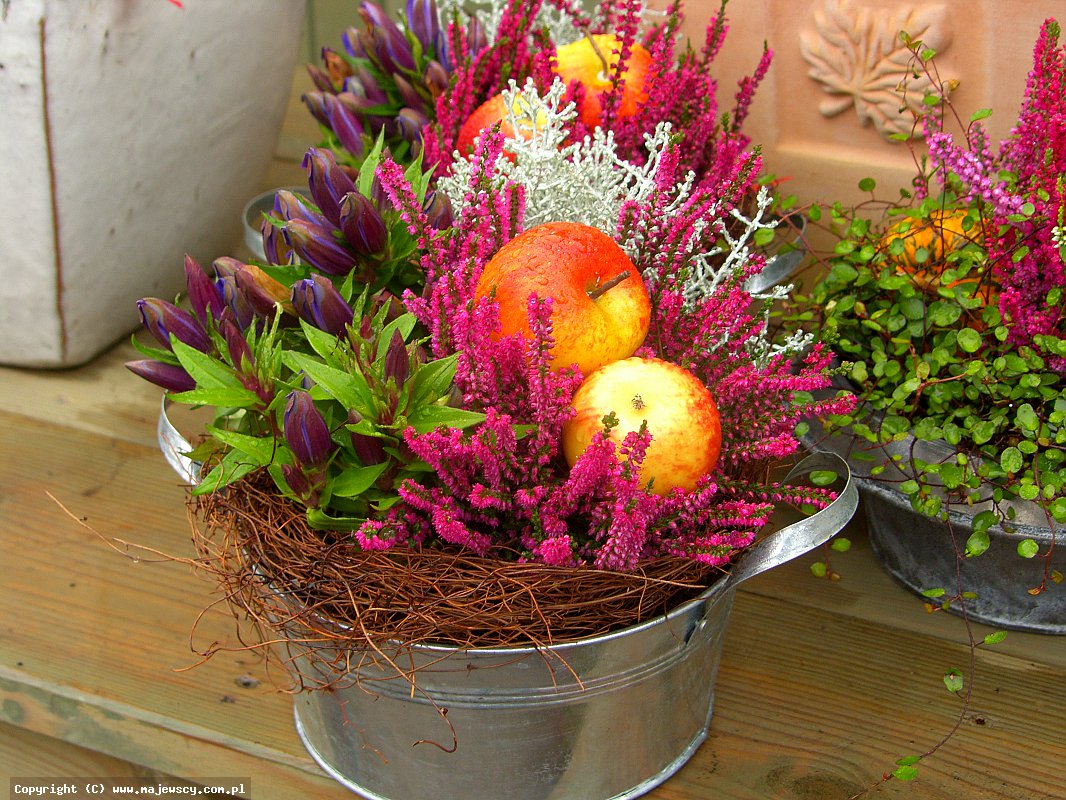Nursery of heather plants, producer of seedlings of heather plants and Japanese azaleas - Poland
About us
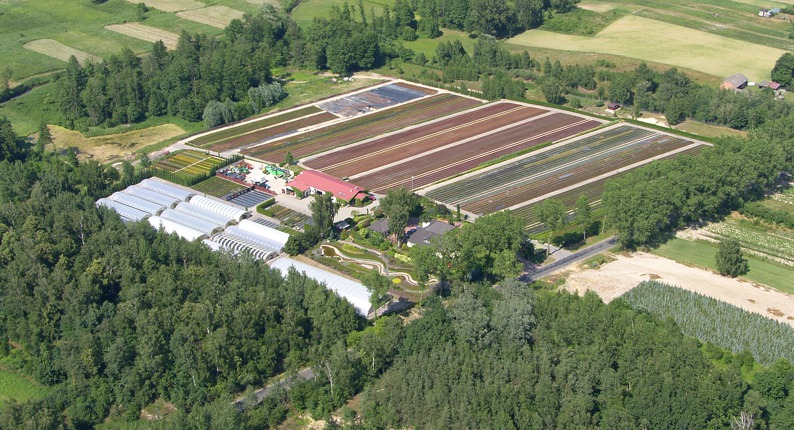 The nursery has existed since 1992, with each year seeing an increase in the production and variety of plants.We gained our
professional expertise through working at the family nursery of Lucjan and Grzegorz Kurowski.To avoid not being in competition with them, we decided to look for an area that we could specialize
in ourselves; and so we decided to concentrate on the production of different varieties of Heathers.We began with under 1hectar, in which we were produced heathers. To this day, it has
increased to nearly 2.5hectars and makes up 50% of our production.We have increased our selection to include many varieties: Rhododendrons, Azaleas, Japanese Azaleas, and many different
lesser well-known plants from this family (kalmia, pieris, andromeda, gaultheria, and crowberry) and many more.The total area of our nursery is composed of nearly 8 hectares, from which
almost 5 hectares is being used in the production of plants for sale, the rest being used for young plants.Our nursery is a member of The Group of Polish Azalea Growers, whose common aims,
is to promote and popularize Azaleas and Japanese Azaleas (Look www.polskieazalie.pl).We are agents of Mr. Kurt Kramera -Edewecht (Germany), who specializes in the cultivation of Buddy
Heather’s: known in Europe under the name of the “Garden Girls”.
The nursery has existed since 1992, with each year seeing an increase in the production and variety of plants.We gained our
professional expertise through working at the family nursery of Lucjan and Grzegorz Kurowski.To avoid not being in competition with them, we decided to look for an area that we could specialize
in ourselves; and so we decided to concentrate on the production of different varieties of Heathers.We began with under 1hectar, in which we were produced heathers. To this day, it has
increased to nearly 2.5hectars and makes up 50% of our production.We have increased our selection to include many varieties: Rhododendrons, Azaleas, Japanese Azaleas, and many different
lesser well-known plants from this family (kalmia, pieris, andromeda, gaultheria, and crowberry) and many more.The total area of our nursery is composed of nearly 8 hectares, from which
almost 5 hectares is being used in the production of plants for sale, the rest being used for young plants.Our nursery is a member of The Group of Polish Azalea Growers, whose common aims,
is to promote and popularize Azaleas and Japanese Azaleas (Look www.polskieazalie.pl).We are agents of Mr. Kurt Kramera -Edewecht (Germany), who specializes in the cultivation of Buddy
Heather’s: known in Europe under the name of the “Garden Girls”.




Japanese and multiflorous azaleas
he name “azalea” and “Japanese azalea” are in colloquial speech only; and it defines them as shrubs, adherent to the genus Rhododendron: which is part of the heather family. The most important
requirement for this family is that they need an acidic soil (pH 3. 5-4.5).
Azaleas are plants that drop their leaves in autumn, and this helps them to survive the winter and spring ground
frosts. Modern varieties of azaleas are hybrids of pontine azaleas, crossed together with many North American species. One of its characteristics is the huge scope and multitude of varieties.
The basic colours are white, orange, red, and pink: as well as many other different shades. Individual shrubs bloom, usually lasts 2-3 weeks. To obtain the best effect in your garden, you
need to organize your planting, so that the different timing of blooms lets you see the best results: which you can view from the middle of April until June. In October, the azalea leaves
cover most of the exquisite colours of autumn, from yellow, orange, to a purplish red. Shrubs without covering, winter very well, though very sharp frosts, can damage floral buds. Azaleas
shrubs are slow growers. After ten years growth (dependant on which variety) they can achieve about 1.5 m in height and diameter.

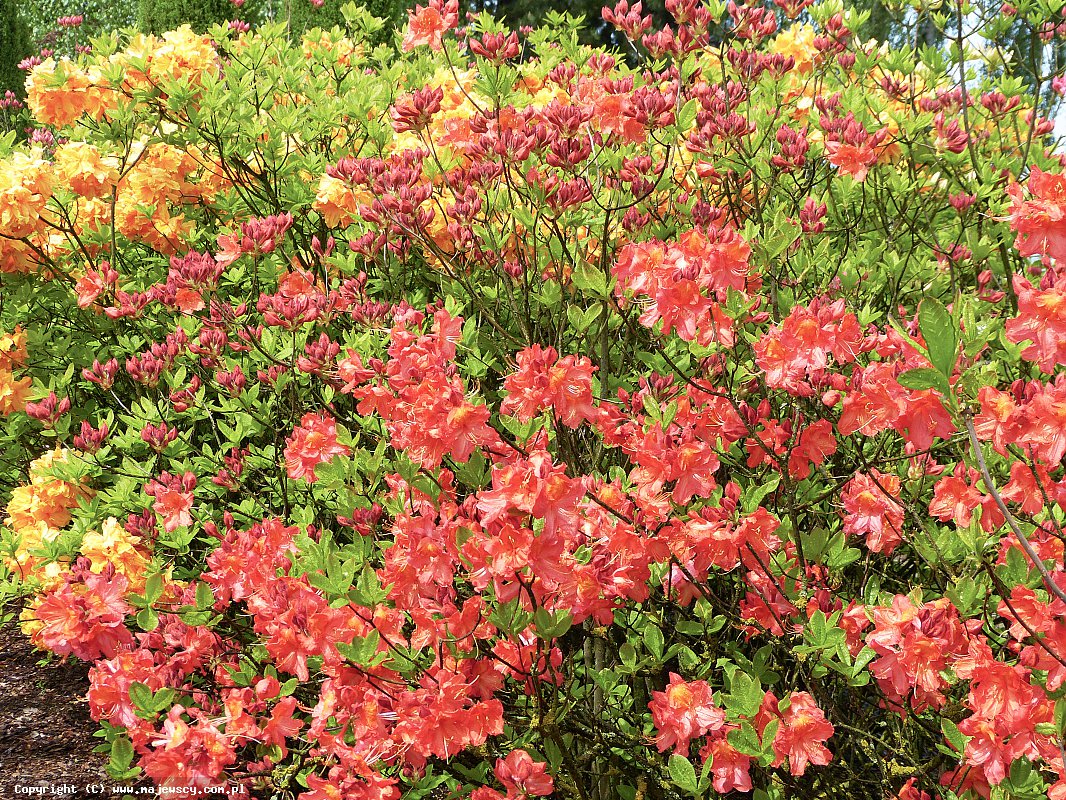



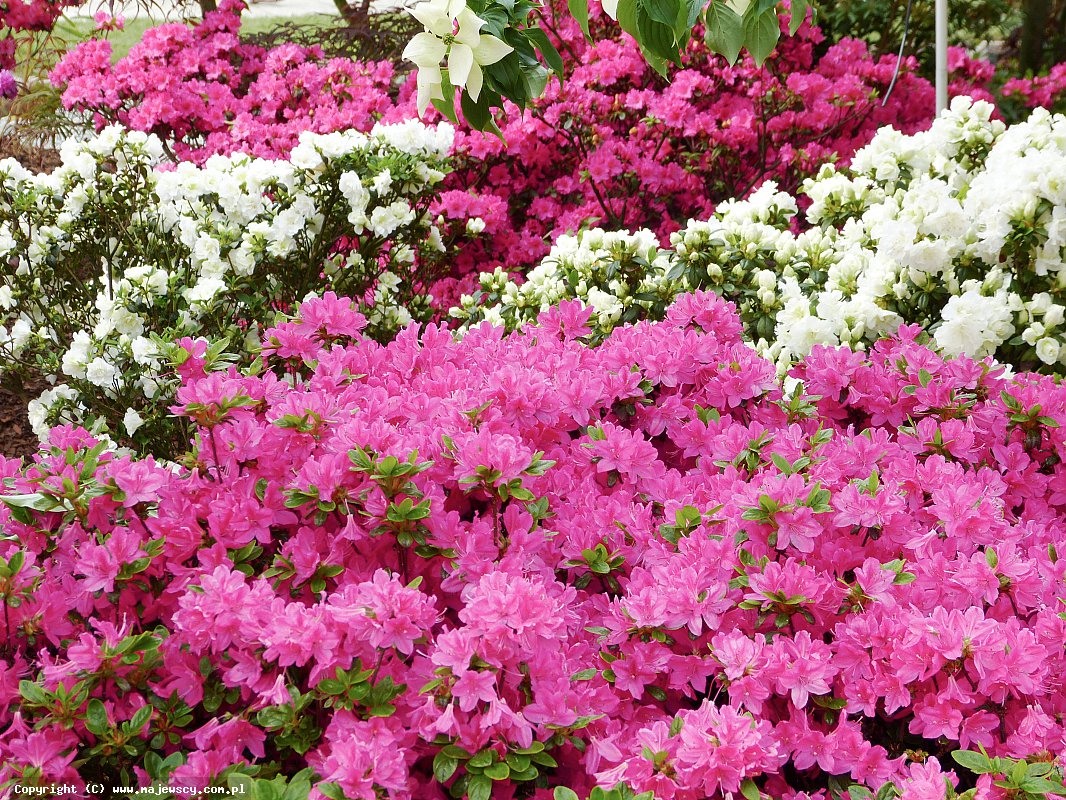

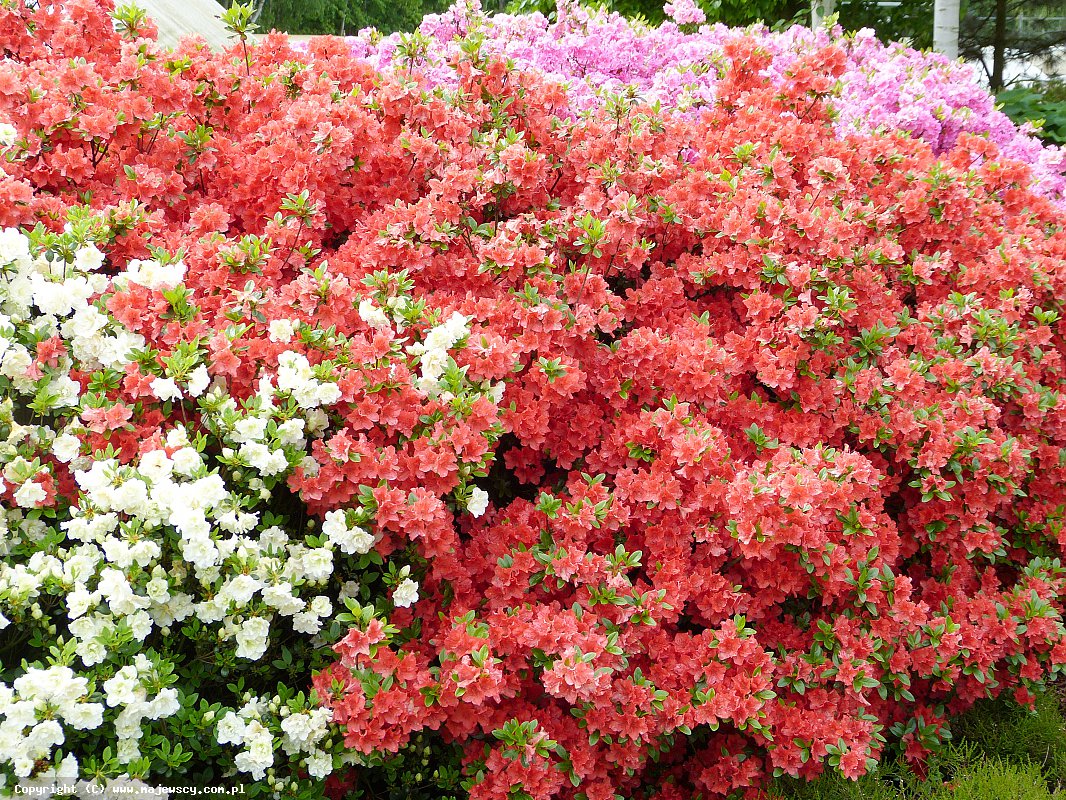
RHODODENDRONS
Customarily, a Rhododendron with evergreen leaves is considered a rhododendron, while those representatives of the Rhododendron genus which shed their leaves for the winter
are known as azaleas. The majority of rhododendrons have considerable requirements in terms of habitat which make it impossible or largely difficult to grow these plants in our climate. The
primary condition for successful cultivation is acidic soil (pH = 4-5). The ground must be permeable, moderately humid. Heavy, compact and overly wet soil is unsuitable. The site ought to
be shaded or semi-shaded, shielded from the wind. The place for a rhododendron must properly prepared. To this end, dig out a hole 80-100 cm in diameter, and approx. 30-50 cm deep. Depending
on the ph of the original ground, add 50 to 80% of acidic peat, and mix it with this ground, or with sand or sandy soil. If the site is too humid, drain it before planting rhododendrons. Due
to the shallow root system, it is advisable – once you have finished planting – to cover the soil with a thick, 3-5 cm, layer of bark. While choosing a specific variety, make sure to check
its resistance to frost. Some varieties have a tolerance up to minus 30 degrees, while others, especially those imported from western Europe, may only resist frost of up to minus 18. Rhododendrons
must be covered for the winter. Snow is the best cover but if there is no snow, tie a string around the plant to reduce its volume and wrap it with non-woven crop cover or double-folded shading
net. We usually perform these activities in mid November, and we uncover the plant in mid March.
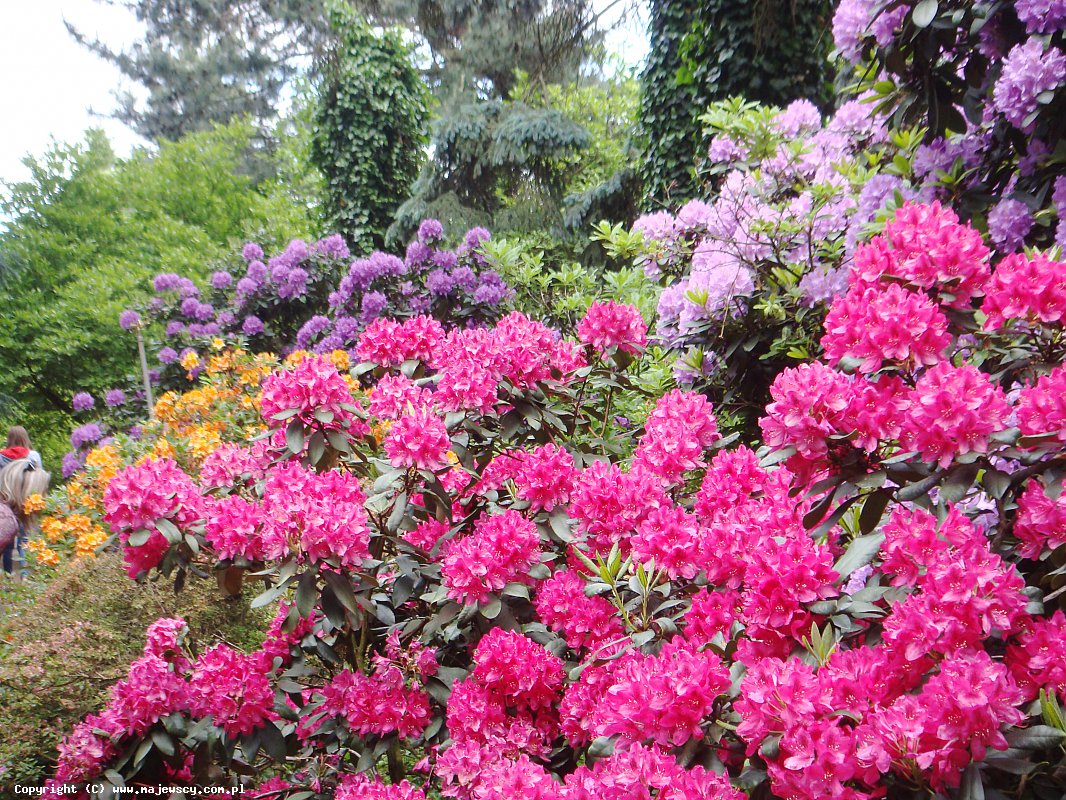


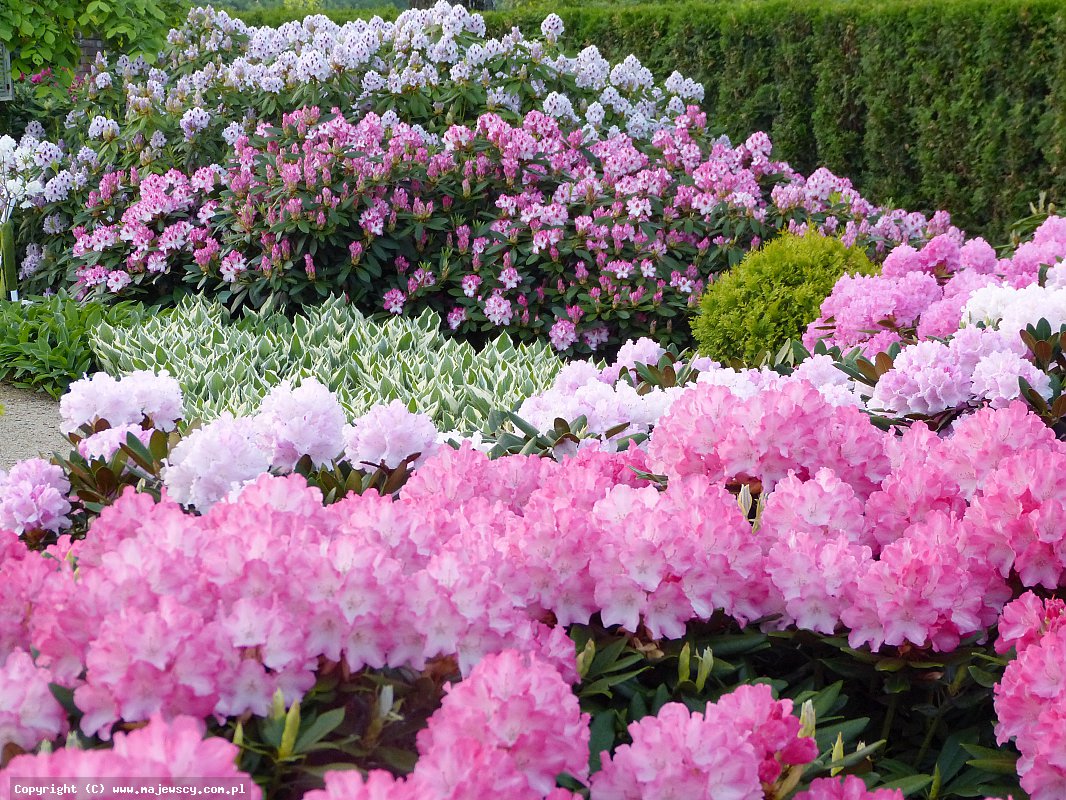



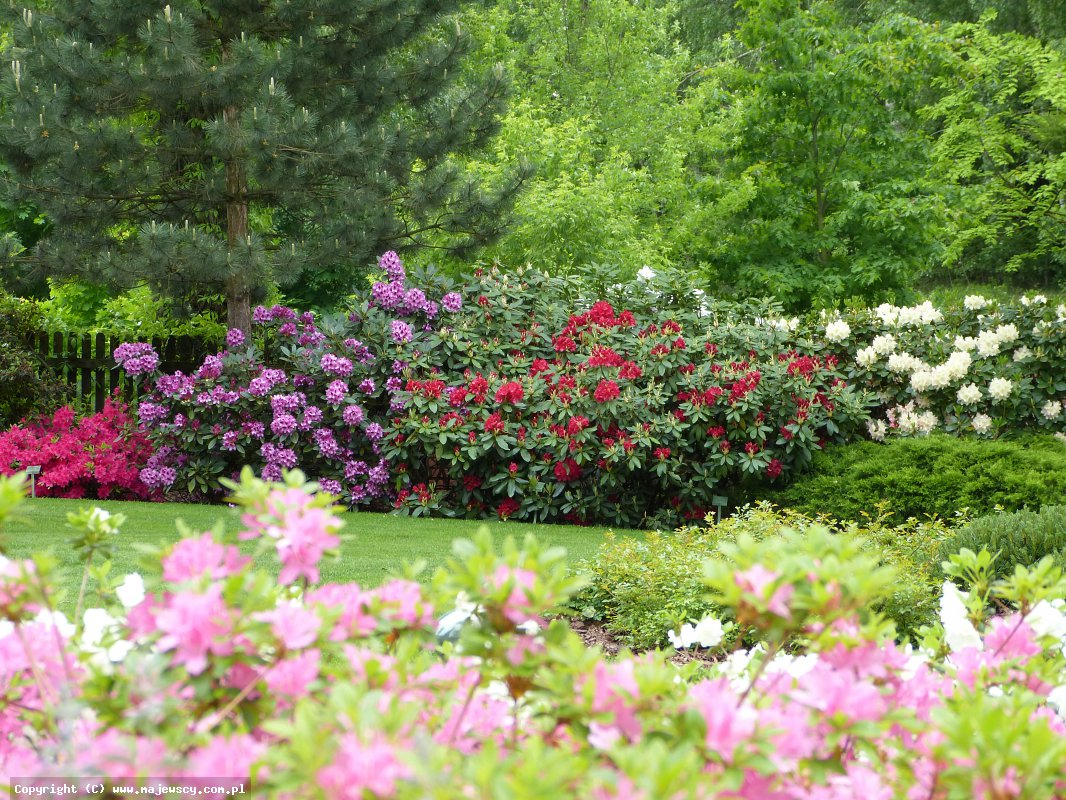
Contact
 The nursery has existed since 1992, with each year seeing an increase in the production and variety of plants.We gained our
professional expertise through working at the family nursery of Lucjan and Grzegorz Kurowski.To avoid not being in competition with them, we decided to look for an area that we could specialize
in ourselves; and so we decided to concentrate on the production of different varieties of Heathers.We began with under 1hectar, in which we were produced heathers. To this day, it has
increased to nearly 2.5hectars and makes up 50% of our production.We have increased our selection to include many varieties: Rhododendrons, Azaleas, Japanese Azaleas, and many different
lesser well-known plants from this family (kalmia, pieris, andromeda, gaultheria, and crowberry) and many more.The total area of our nursery is composed of nearly 8 hectares, from which
almost 5 hectares is being used in the production of plants for sale, the rest being used for young plants.Our nursery is a member of The Group of Polish Azalea Growers, whose common aims,
is to promote and popularize Azaleas and Japanese Azaleas (Look www.polskieazalie.pl).We are agents of Mr. Kurt Kramera -Edewecht (Germany), who specializes in the cultivation of Buddy
Heather’s: known in Europe under the name of the “Garden Girls”.
The nursery has existed since 1992, with each year seeing an increase in the production and variety of plants.We gained our
professional expertise through working at the family nursery of Lucjan and Grzegorz Kurowski.To avoid not being in competition with them, we decided to look for an area that we could specialize
in ourselves; and so we decided to concentrate on the production of different varieties of Heathers.We began with under 1hectar, in which we were produced heathers. To this day, it has
increased to nearly 2.5hectars and makes up 50% of our production.We have increased our selection to include many varieties: Rhododendrons, Azaleas, Japanese Azaleas, and many different
lesser well-known plants from this family (kalmia, pieris, andromeda, gaultheria, and crowberry) and many more.The total area of our nursery is composed of nearly 8 hectares, from which
almost 5 hectares is being used in the production of plants for sale, the rest being used for young plants.Our nursery is a member of The Group of Polish Azalea Growers, whose common aims,
is to promote and popularize Azaleas and Japanese Azaleas (Look www.polskieazalie.pl).We are agents of Mr. Kurt Kramera -Edewecht (Germany), who specializes in the cultivation of Buddy
Heather’s: known in Europe under the name of the “Garden Girls”. 

















